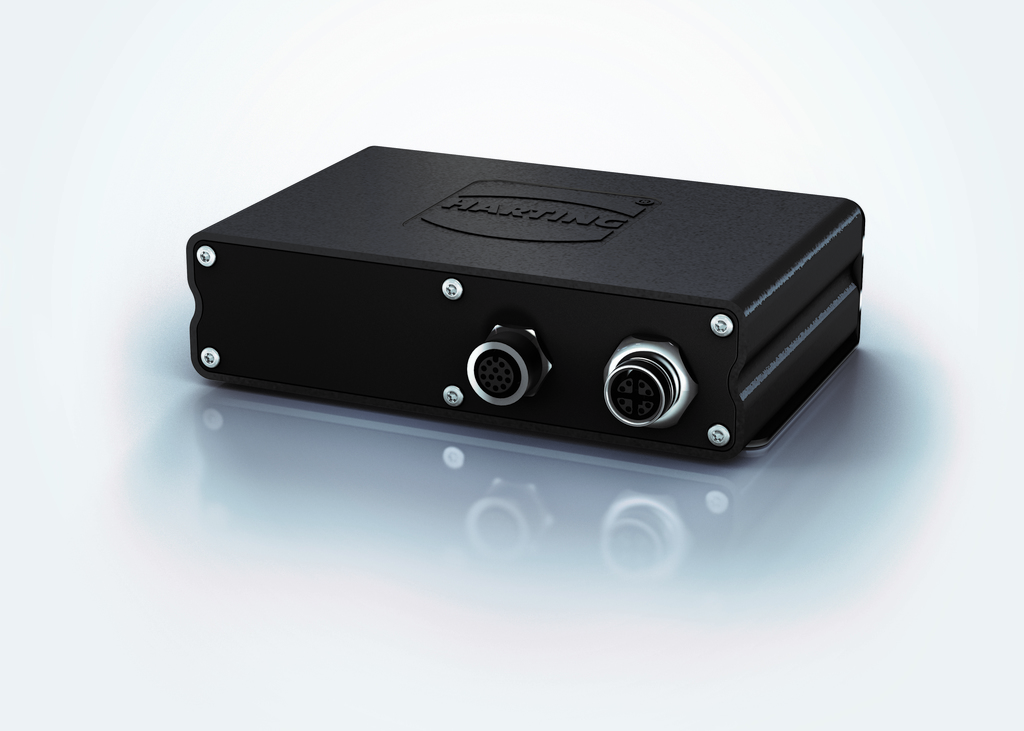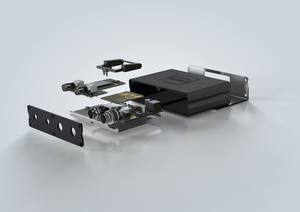
 |
Charlotte Stonestreet
Managing Editor |
Into the virtual realm
14 June 2016
There is an increasing need for compact, but robust, computer systems to perform tasks in the field — from collecting sensor data and the orchestration of PLC systems to communication with data centres and the cloud. These techniques enable future production systems to be simpler, more modular, and more cost effective

Meanwhile, virtualisation has moved from an efficiency tool to being the way IT gets done. It can be defined as one physical computer performing the same function as multiple computers. To achieve this, one single highly-specified computer is loaded with special software which allows resources to be managed & shared.
Most computers operate using as little as 4-7% of their resources. In a virtualised environment, greater savings can be made in power consumption, physical space and resource utilisation, as multiple physical machines can be consolidated into fewer machines.
Harting has announced the UK commercial availability of its ruggedised computer, MICA (Modular Industry Computing Architecture). A complete platform comprising a toolkit of hardware and software modules, MICA merges the real world of a production environment with the virtual world of IT and is designed to let developers from both backgrounds realise projects quickly and successfully. It uses a Linux operating system. The unique Virtual Industrial Computing layer provides an innovative combination of established and proven Linux technologies which allow applications to be virtualised in the field without the overhead of running classical virtual machines.
Applications run in Containers which provide all the libraries and drivers to provide a secure, stand-alone infrastructure needed in demanding industrial applications. And unlike Raspberry Pi, Beaglebone, or mini ATX-based PCs, MICA hardware comes in a compact, industrial strength, environmentally sealed diecast aluminium enclosure with industry-standard plug connectors.
Linux Containers (LXC) do not use virtual machines: rather than a complete operating system, at the most basic level, a Container is simply a file system containing the application and the libraries and files needed to run it.
MICA is the first system offering usable virtualisation on embedded devices for manufacturing use. Using Linux Containers on top of a streamlined base OS, it is capable of virtualising field devices without the overhead of conventional virtualisation.
The entire system is designed to be easily extendable with additional customised hardware and software components. For example, all circuit boards communicate via standard USB interfaces to facilitate easy prototyping, addressing, and integration. The enclosure offers multiple reconfigurable I/O ports which can supply up to 24VDC. A MICA computing appliance can be powered via Power over Ethernet (PoE) or alternatively 24V DC.
Fully supported
MICA was displayed for the first time in the UK at the ‘Drives and Controls’ show in April, and is now fully supported for commercial use. MICA was also installed in the ‘Rinspeed Etos’ concept car displayed on the Harting stand (visited by Germany’s Chancellor Angela Merkal and President of United States of America, Barack Obama) during the Hannover Messe event in April. The car was also displayed at the Geneva motor show in March to great acclaim.
Rinspeed uses a Harting MICA for emissions and status monitoring. The Rinspeed Etos then transmits this data gathered by the MICA device to a neutral third-Party (Dekra), for independent analysis. This illustrates how the Internet of Things could be used more widely in the future to monitor and evaluate emissions and performance data in real-world driving conditions. This same technique could also be applied to a range of other industrial and logistical equipment to help monitor performance and maintenance.
Gavin Stoppel, product and applications manager at Harting UK, said; “Companies deploying large scale automation using ‘Industrial Internet of Things’ networks and distributed control systems need this type of device. Ruggedised computers are a key element in delivery of Industry 4.0, and since we showed MICA at ‘Drives and Controls’ we have had a lot of interest in it from companies working on various applications, especially RFID and performance monitoring.”
Key Points
- To achieve virtualisation one single highly-specified computer is loaded with specialised software which allows resources to be managed and shared
- Harting's ruggedised computer, MICA, is a complete platform that merges the real world of a production environment with the virtual world of IT
- MICA is reported to be the first system to offer usable virtualisation on embedded devices for manufacturing use



















